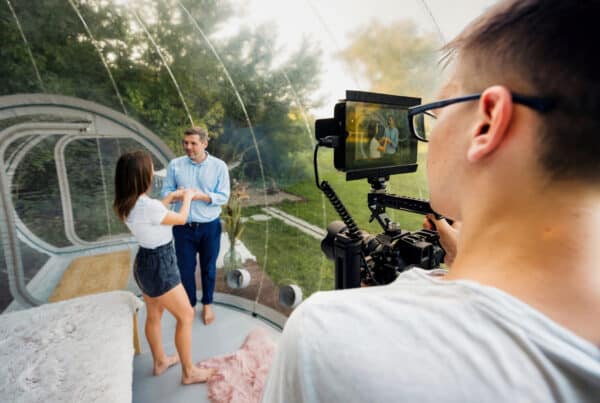
Introduction
In the realm of visual technology, video projectors have emerged as essential tools, especially when paired with omnidirectional cameras. These cameras capture a 360-degree view of their surroundings, creating immersive content that demands equally impressive display capabilities. Selecting the right projector is crucial for optimizing the viewing experience, ensuring that the vibrant details captured by omnidirectional cameras are faithfully reproduced on screen.
Understanding Omnidirectional Cameras
Omnidirectional cameras, often referred to as 360-degree cameras, are designed to capture a spherical view of the environment. This capability makes them ideal for applications such as virtual reality (VR), immersive environments, and panoramic video production. The content created with these cameras ranges from interactive VR experiences to expansive landscape videos, requiring display systems that can handle high-resolution, wide-angle imagery.
Key Considerations for Choosing a Projector
Brightness and Lumens
Brightness, measured in lumens, is a critical factor in projector performance. It determines how well the projected image can be seen in various lighting conditions. For dark rooms, a projector with 1,500 to 2,500 lumens may suffice, while well-lit areas might require 3,000 lumens or more to ensure clear visibility.
Resolution
Resolution is another pivotal aspect, affecting the sharpness and clarity of the projected image. High-definition (HD) and 4K resolutions are common, with 4K offering superior detail and depth. It’s essential to match the projector’s resolution with the output of the omnidirectional camera to maintain image quality.
Throw Ratio
The throw ratio of a projector defines the distance between the projector and the screen relative to the image width. Understanding this ratio is vital for proper projector placement, ensuring that the image fits the screen without distortion. Calculating the required throw ratio involves considering the room size and screen dimensions.
Lens Options
Projectors come with various lens options, including fixed and zoom lenses, as well as short throw and long throw variants. Lens flexibility is crucial for adapting to different environments, allowing for adjustments in image size and focus without moving the projector.
Types of Projectors Suitable for Omnidirectional Camera Integration
Several types of projectors are suitable for use with omnidirectional cameras, each with its pros and cons:
- DLP Projectors: Known for their sharp images and high contrast, DLP projectors are excellent for detailed visuals but may suffer from a “rainbow effect” in some models.
- LCD Projectors: These lcd projectors offer vibrant colors and are generally more affordable, though they may require more maintenance due to dust accumulation.
- Laser Projectors: Offering long-lasting brightness and excellent color accuracy, laser projectors are ideal for high-quality immersive experiences but tend to be more expensive.
Evaluating Content and Display Needs
Content Type
The compatibility of a projector with the type of content being displayed is crucial. For instance, high-quality video and accurate color reproduction are essential for immersive experiences, requiring projectors with advanced color management capabilities.
Multi-projector Configurations
For larger displays or dome environments, multiple projectors may be necessary. This setup requires careful consideration of software and alignment tools to ensure seamless projection and avoid image overlap or gaps.
Budget Considerations
Balancing quality and budget is a common challenge when selecting a projector. It’s important to assess the specific needs and constraints of your project, exploring options within different budget ranges. While higher-end projectors offer superior performance, there are often trade-offs to consider, such as reduced features or resolution in more affordable models.
Frequently Asked Questions (FAQs)
- What features should I look for in a projector for 360-degree videos?
Look for high resolution, brightness, and color accuracy to ensure the immersive quality of 360-degree content. - How do I determine the best throw distance for my projector?
Calculate the throw ratio based on your room size and screen dimensions to find the optimal placement. - Can I use a regular projector for immersive content?
While possible, regular projectors may not offer the resolution or brightness needed for high-quality immersive experiences. - What is the best projector brand for professional use with omnidirectional cameras?
Brands like Christie Digital and Epson are renowned for their professional-grade projectors. - Are there projectors specifically designed for dome theaters?
Yes, some projectors are tailored for dome environments, offering features like fisheye lenses and multi-projector support.
Conclusion
Choosing the right video projector for omnidirectional cameras involves considering several factors, from brightness and resolution to lens options and budget constraints. By understanding these elements and researching available options, you can find a projector that meets your specific needs and enhances the immersive quality of your content. For more detailed insights and recommendations, consider visiting resources like B&H Photo Video and Christie Digital, which offer extensive information on projector technology.
Find the perfect video projector for your omnidirectional camera needs! Contact Virtually Anywhere today to explore the best options for stunning 360-degree visuals, immersive presentations, and high-quality virtual experiences. Whether for business, entertainment, or education, the right projector makes all the difference. Start enhancing your visuals today!




